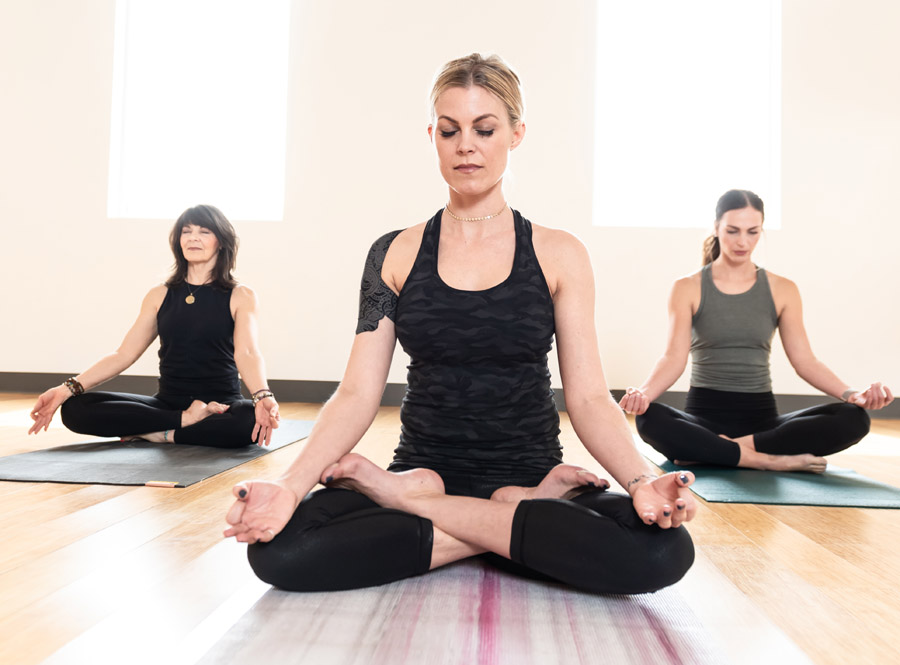
On Wednesday, January 6, 2021, after the jarring events of the day, I taught my regularly scheduled yoga class. But given the palpable anxiety of my students—even through Zoom—I tossed my class plan. We practiced balancing to calm and center. Then we practiced supine twists and forward bends. I followed this with yoga nidra and a brief metta meditation. The following week, I offered a calming breath awareness practice.
Our own breath is the most powerful tool we have. Ancient yogis knew this. Pranayama (breathing practices) constitute one of the Eight Limbs of Yoga. The second chapter of the Hatha Yoga Pradipika introduces more than a dozen breathing practices that affect the nervous system, and therefore, affect the mind. Pranayama is the bridge between the more physical, worldly practices and the “heart” of yoga—meditation.
Breathing Meditation
But we don’t have to manipulate the rate or depth of the breath in order to bring about calm. We can use intention and simple breath awareness to bring a sense of ease to the body-mind.
Breath awareness practices are the foundation of mindfulness. Traditionally, breath awareness is taught first, as a practice to help stabilize the mind, because it’s easier to develop stability in the mind when we have something to focus on. When we use the breath to create an anchor, then it’s just a short step to practicing mindfulness of the the entire body, the first of the four foundations of mindfulness. (The four foundations are the heart of mindfulness practice.)
How to Practice Calming Breath Awareness
- Sit comfortably, on a meditation cushion. If you find that your body is tense, feel free to sit on a chair so that you can rest your back against something.
- Let your body settle into gravity. Notice if you are leaning forward, even subtly. If so, settle back. Let your eyes release back into their sockets, and relax your brain, allowing it to feel spacious inside your skull.
- Tune into your breathing. Without trying to change the rate or depth, simply feel your breath. It can be helpful to choose a place in your body where you feel the breath clearly—your nostrils, chest or abdomen.
- Simply feel each inhalation and each exhalation. Continue for a minute or so.
- Now, as you inhale, say to yourself “calm” or “inhaling, calm the body” or some other cue using the word “calm.” Then do the same as you exhale. Intentionally calm your body with each inhalation and exhalation.
- Continue for at least five minutes, but you can go as long as you like.
You may find it easier to calm your body on the exhalation. This is normal. If you find it to be challenging to calm your body on the inhalation, don’t worry about it. This can take time. It’s not helpful to create stress around it.
You can do this practice any time. Try it in your yoga practice, or in quiet moments in your life. Practice while you’re sitting at a stoplight or waiting in line. Use calming breath awareness to take the edge off when you’re lying in bed, unable to sleep. Our breath is the most powerful tool we have to calm our body-mind, and it’s always available, as long as we remember to use it.
